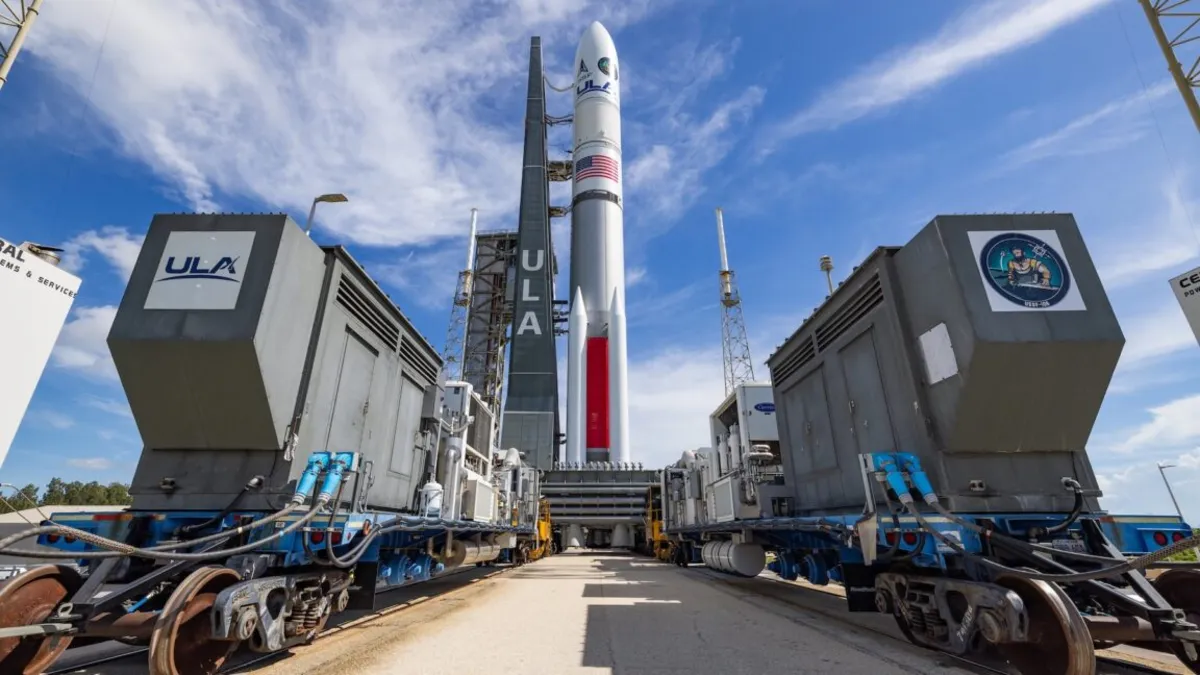
After more than a decade of extensive development and rigorous testing, US military officials are finally ready to utilize the United Launch Alliance's Vulcan rocket to transport a critical batch of national security satellites into orbit. This significant launch includes an experimental military navigation satellite that has also been in development for over ten years, which will be sent to geosynchronous orbit—a distance of over 22,000 miles (nearly 36,000 kilometers) above the equator.
While the primary payload is known, additional payloads are securely housed within the Vulcan rocket's nose cone. However, officials from the US Space Force have not disclosed any further details regarding these additional missions. The Vulcan rocket is scheduled for liftoff from Cape Canaveral Space Force Station, Florida, at 7:59 PM EDT (23:59 UTC) on Tuesday, with favorable weather conditions predicted—an 80 percent chance of clear skies during the one-hour launch window.
The journey of the Vulcan rocket has been marked by two successful demonstration missions in 2024, culminating in a comprehensive campaign to design, build, and test this new launch vehicle before the Space Force could certify it for operational use. With certification now complete, ULA is on the brink of addressing a backlog of over 70 Vulcan launches that the company has secured from both commercial and government clients. The primary customers for the new rocket will be Amazon and the US Space Force.
Gary Wentz, ULA's vice president of government and commercial programs, expressed enthusiasm for the upcoming mission, stating, "This will be the most powerful Vulcan yet." The initial two flights of the Vulcan rocket utilized a configuration equipped with two strap-on boosters to enhance the launch speed. However, for the upcoming flight, designated USSF-106 by the Space Force, the rocket will be outfitted with four solid rocket boosters manufactured by Northrop Grumman—larger versions of the solid rocket motors successfully used by ULA for over 35 years.
Despite their reliable history, these boosters faced scrutiny following a nozzle failure during the second Vulcan test flight last October. A nozzle from one of the solid rocket boosters detached moments after launch, yet the motor continued its operation, allowing Vulcan to reach its intended orbit. Subsequent investigations revealed that a manufacturing defect in a carbon composite insulator had compromised the nozzle's integrity. Engineers have since resolved the issue, paving the way for this operational launch.
In March, Space Force officials officially certified the Vulcan rocket for national security launches, setting the stage for Tuesday’s USSF-106 mission. United Launch Alliance, a joint venture between Boeing and Lockheed Martin, remains one of only two companies authorized to launch the Pentagon's most critical and costly satellites, with SpaceX being the other provider. SpaceX's Falcon 9 and Falcon Heavy rockets have gained an edge over ULA's capabilities, primarily due to their booster reuse technology.
While the Vulcan rocket is currently designed for single-use, ULA has plans to eventually recover and reuse the BE-4 engines, though not the entire core stage of the rocket. Despite its higher costs and untested capabilities, the Vulcan rocket has secured a majority of the US military launch contracts from 2020 to 2024, while SpaceX has earned close to half of the launch orders available for competition. A recent shift in contracts awarded in April has positioned SpaceX as the leading military launch provider, while ULA has taken a secondary role.
The Vulcan rocket fulfills several critical requirements for the Space Force. Firstly, it relies entirely on US-manufactured rocket engines, marking a significant shift away from Russian-built engines previously used in the Atlas V rocket. With escalating tensions between the US and Russia, officials have prioritized eliminating reliance on foreign engines for military satellite launches.
Secondly, ULA claims that the Vulcan rocket will eventually offer a heavy-lift launch capability at a lower cost than the now-retired Delta IV Heavy rocket. Furthermore, the Vulcan rocket provides the Space Force with a reliable alternative to SpaceX's Falcon 9 and Falcon Heavy rockets, which have been the only options available to the military since the last national security mission launched aboard an Atlas V rocket a year ago.
The Space Force has publicly acknowledged only one satellite aboard the USSF-106 mission, with additional payloads remaining undisclosed. The confirmed mission, valued at $250 million, is the Navigation Technology Satellite-3 (NTS-3), an experimental spacecraft designed to test innovative satellite navigation technologies that could be integrated into future GPS systems.
The NTS-3 mission, managed by the Air Force Research Laboratory, aims to explore solutions to combat GPS jamming and spoofing, issues that significantly impact navigation signals used by military forces, commercial airlines, and civilian drivers. Joanna Hinks, a senior research aerospace engineer, indicated that the NTS-3 satellite will conduct over 100 different experiments to enhance navigation reliability, particularly in conflict zones.
As the launch approaches, further details about additional payloads remain closely guarded by Space Force officials. This level of secrecy marks a departure from the more transparent approach typically observed in recent national security launches, raising questions about the capabilities and objectives of the remaining payloads on board.
The successful deployment of the Vulcan rocket and its payloads could redefine the landscape of military satellite launches and enhance the United States' capabilities in space operations. As amateur skywatchers prepare to track the launch, the world watches closely, anticipating the advancements that this mission will bring to national security.